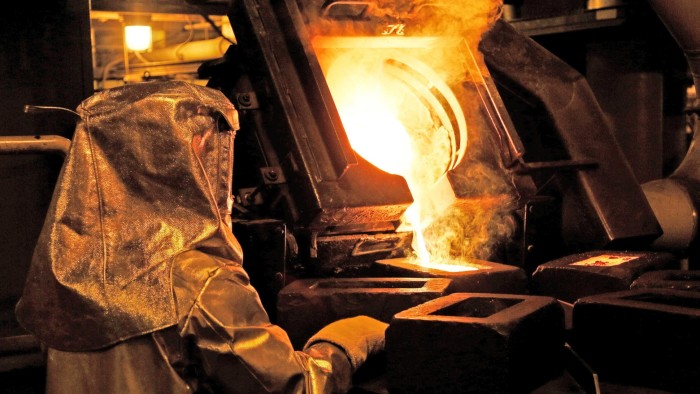Unlock the Editor’s Digest for free
Roula Khalaf, Editor of the FT, selects her favourite stories in this weekly newsletter.
Unstoppable force meets no-longer-immovable object. Soaring gold prices typically bypass miners of the shiny stuff — but not this time. Shares in top duo Newmont and Barrick Gold are up by a quarter and fifth respectively, beating gold’s year-to-date 18 per cent streak.
That marks quite the reversal of — relative — fortunes for the miners. Over the past five years, they were notable for just how little of gold’s shine they managed to capture. And that is despite the fact that, thanks to a slug of fixed costs, company profits should theoretically increase by more than gold itself.

This time, there are two big changes which work in miners’ favour. For one thing, their costs are more fixed than they used to be. Input inflation has been tempered. During the Covid-driven gold rally of 2020, snarled supply chains and higher prices for just about everything constrained miners’ margin expansion. Production costs, while still rising, are doing so more modestly than before.

Second, miners, which have embarked on some spectacular value destruction over the decades, are thought to be less likely to waste their windfall this time around. Recent M&A transactions have been disciplined in terms of deal size and geography. Johannesburg-based Gold Fields’ rebuffed bid for Gold Road, for instance, valued it at $2.1bn. Last year, it paid C$2.16bn (US$1.5bn) for Canadian group Osisko. Like a handful of Australian pairings, these are smallish deals in less risky jurisdictions.
The upshot is that a sector once defined by its wanton capital allocation is now generating cash and embarking on share buybacks. Assuming spot gold prices at current levels, TD Securities estimates free cash flow yields of 9.5 per cent this year for Barrick and 7.5 per cent for Newmont.
Given the duo are still shouldering some legacy burdens such as Barrick’s political woes in Mali and elsewhere and Newmont’s scars from its acquisition of Newcrest — at an enterprise value of A$28.8bn (US$18bn) — in 2023, fortunes could improve further.
For an idea of what improvement looks like, take a squint at Kinross Gold. The miner took an early lesson on generating, and returning, cash when activist investor Elliott came onboard in 2022. True, the Canadian miner is in harvest mode, generating cash while spending little on big new projects. But last year it doubled free cash flow to $1.3bn, enabling it to continue dividends and buybacks. These are things equity investors, unlike their bullion-hoarding peers, care about.
There are other tailwinds, too. Miners have a lot of catching up to do given their lousy 2024. The most recent crop of results was decent, with several miners beating estimates and their own production guidance. If operational leverage continues to shine through, gold miners may finally dig themselves out of the pit.
https://www.ft.com/content/89fa3f6f-98c8-4859-a825-48aa84998c52


